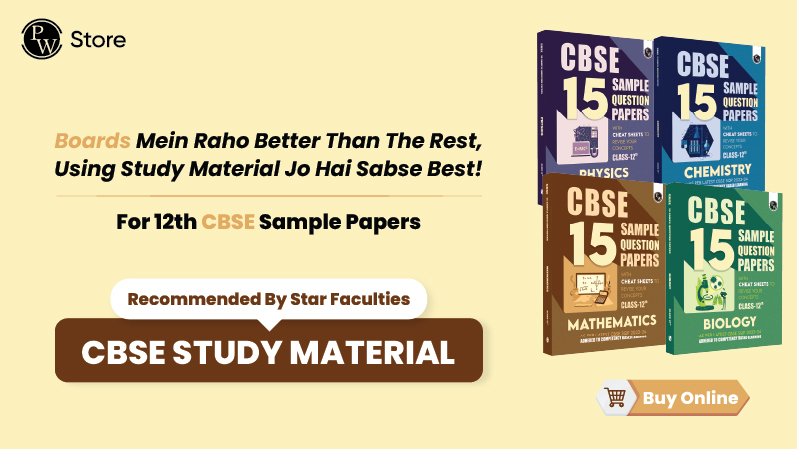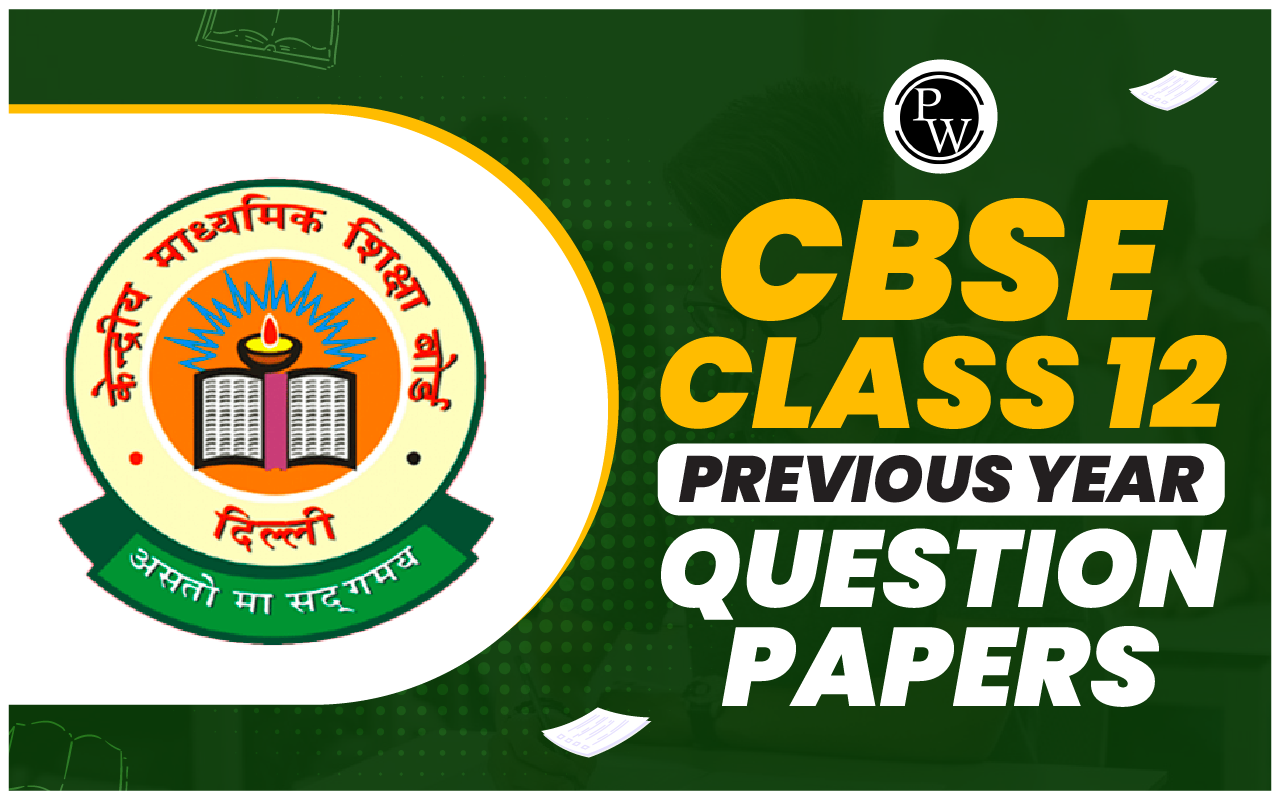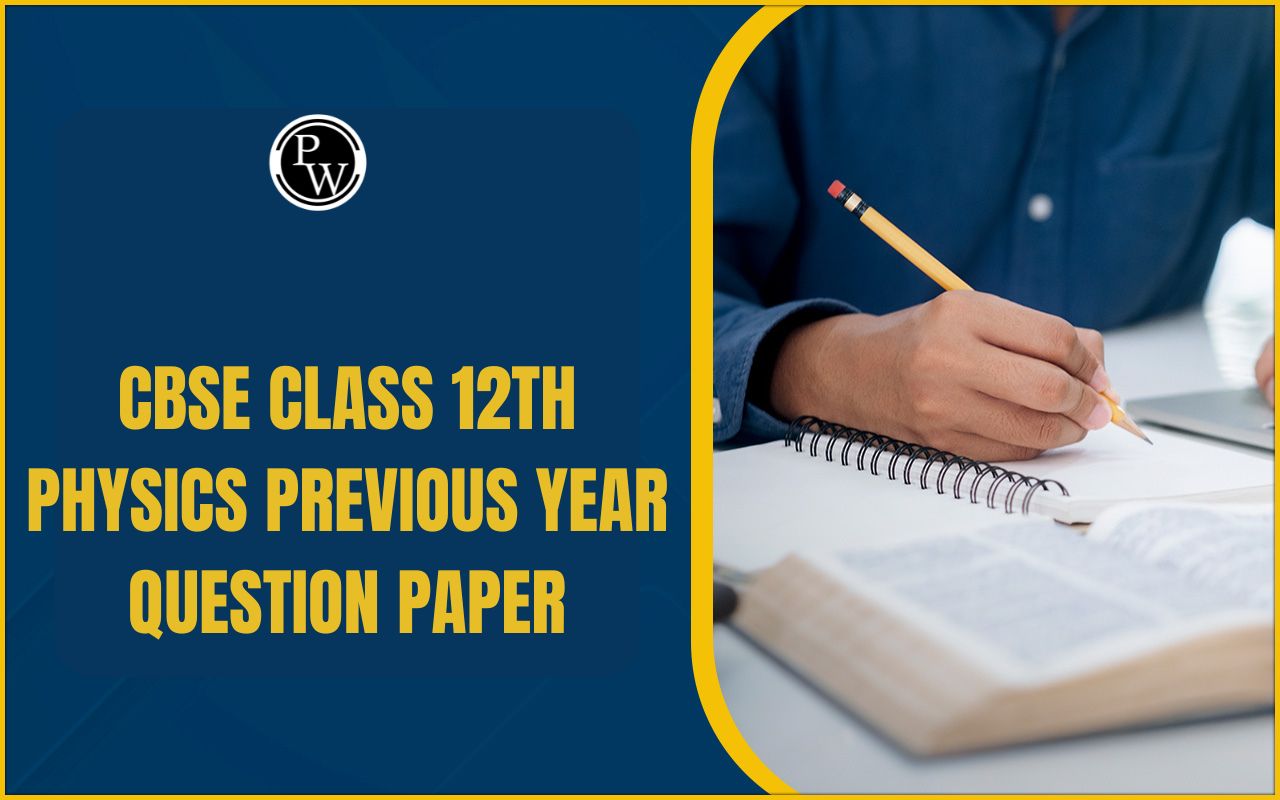
CBSE Class 12 Biology Additional Practice Paper 2023-24: The Central Board of Secondary Education has issued the CBSE Class 12 Biology Additional Practice Paper 2023-24. This is for students in Class 12 who have chosen science as their main subject. To get this paper, students can visit the official CBSE website at www.cbseacademic.nic.in.
Those getting ready for the CBSE Class 12 Board exam in 2024 are encouraged to use the CBSE Class 12 Biology Additional Practice Paper 2023-24. It's beneficial to thoroughly practise these papers as it helps students become familiar with the recently updated CBSE paper pattern. All students should be aware that starting this session, there won't be term exams, and instead, a single examination will be held by the Central Board.CBSE Class 12 Biology Additional Practice Paper 2023-24 Overview
The recently published CBSE Class 12 Biology Additional Practice Paper for the academic year 2023-24 covers the entire syllabus. Students preparing for the CBSE Class 12 Biology exam in 2023 can get the biology sample paper from the official CBSE website or read it in our article, where we've included the complete CBSE Class 12 Biology Additional Practice paper with solutions. Now, let's go over some important instructions that students should be aware of before taking the exam.| CBSE Class 12 Biology Additional Practice Paper | Download Here |
| CBSE Class 12 Biology Additional Practice Paper Solution | Download Here |
- In Section A: There are 16 questions Carrying 01 mark each;
- In Section B: Consists of 05 questions of 02 marks each;
- In Section C: There are 07 questions of 03 marks each;
- In Section D: Contains 02 case-based questions of 04 marks each; and
- In Section E: Carries 03 questions of 05 marks each;
- Wherever necessary, the students are required to draw neat and properly labelled diagrams.

CBSE Class 12 Biology Additional Practice Paper 2023-24
Here we have discussed all the questions of the Biology Additional Practice Paper 2023-24 with their solutions.Section A
Question 1. In the process of making pollen grains, the generative cell splits to create the two male gametes.What is the ploidy of the generative cell?
- n
- 2n
- 3n
- 4
- Only 1 and 3
- Only 1 and 2
- Only 2 and 4
- Only 1, 2, and 3
- No, as the genetic code is universal.
- Yes, as the genetic code is degenerate.
- No, as the mRNA is translated into a protein sequence.
- Yes, as the mRNA contains introns which are non-coding sequences.
- Eggs that have an O chromosome will give rise to a male cricket.
- Eggs that have an X chromosome will give rise to a female cricket.
- Sperms that have an X chromosome will give rise to a male cricket.
- Sperms that have an O chromosome will give rise to a male cricket.
Which type of natural selection does this phenomenon exemplify?
- directional
- stabilising
- disruptive
- (The phenomenon described does not exemplify natural selection.)
- Homo erectus
- Homo habilis
- Neanderthal Man
- Australopithecines
- P
- Q
- R
- S
- 25%
- 50%
- 75%
- 100%
- malting
- dilution
- distillation
- maturation
Section B
Question 10. Kavya mentions that the placenta makes relaxation, and this is important during pregnancy.- Is she correct? Justify.
- Name TWO other hormones secreted by the placenta during pregnancy.
- State the genotypic and phenotypic ratios of offspring born to a carrier mother and a thalassemic father.
- Does the allele for thalassemia exhibit codominance? Justify.
- Identify ONE component that should definitely NOT be present in the reactor to grow the lactobacillus spps. Justify.
- Explain TWO quantities that the sensors in the bioreactor should monitor.
Section C
Question 14. A biologist observes the cells in a cross-section of the seminiferous tubule and the nearby tissues. The biologist then tallies the different types of cells. Spermatozoa, Spermatid, Primary spermatocyte, Secondary spermatocyte, Leydig cells, Sertoli cells, Spermatogonium. From these cells, identify the cells:- that are diploid.
- that can produce hormones and their names.
- If the lady's monthly period, which comes regularly, is expected to begin on July 19, what was the approximate date when ovulation occurred in the last cycle?
- List the four crucial reproductive hormones and mention whether their concentrations will be elevated or reduced on the specified date in (a).
- State any FOUR phenomena in which the Hardy-Weinberg theorem may not hold true.
- A group of 100 beings has 0.3 for the A gene and 0.7 for the A gene. The Aa gene mix (heterozygous) happens at 0.49. Is this bunch following the Hardy-Weinberg balance? Explain why or why not.
Section D
Question 17. Here is a cloning vector 'Z' that Kamla plans to use for making a recombinant vector containing her gene of interest. The vector has spots for three restriction enzymes: ScaI, HindIII, and EcoRI. The gene of interest also has spots for these same enzymes. It has two ‘ori’ sequences, one for replicating in Escherichia coli and another for replicating in Zymomonas mobilis. Additionally, the vector contains two antibiotic resistance genes—one for tetracycline (tet) and another for chloramphenicol (CML).- What are the benefits of having two 'ori' sequences in one vector? Provide a scenario where this would be especially helpful.
- If the vector gets sliced with HindIII, what will be found in colonies growing on a medium with tetracycline for sure?
- Recommend which of the three restriction enzymes would be appropriate for adding the gene of interest. Provide TWO benefits of using the enzyme you selected.
- Mention one drawback of using the two other restriction enzymes not selected in (b).
- What could be the reason for the pattern observed in the populations of prey and predators over the years?
- If, let's say, all the predators in the forests disappear, what would happen to the plants in the forest?
- Imagine a scenario where a different kind of predator species moves into the forest. What is expected to occur over time and why?
Section E
Question 19. A Non-Government Organisation (NGO) aims to increase awareness against STDs.- What could be the ideal target age group for the NGO?
- List two possible enduring health issues that can arise from untreated STDs, which the NGO should inform the target age group about.
- Mention ONE contraceptive method that provides protection against the STD. Justify.
- Mention TWO birth control methods that don't guard against STDs, which they can inform the group about.
- Suggest and explain a way of testing if their baby is at risk for any genetic disorders.
- If there are any abnormalities present that could be risky for the mother's health, suggest one option for them to think about.
- Is the process mentioned in (b) safe for Lalita at the current gestational age? Justify.
- Under what conditions is the process mentioned in (b) illegal?
- Find the protein sequence created by this set of codes.
- Sketch the tRNA structure for the third codon and mark its direction. Explain why the direction is chosen.
- The initial guanine in the genetic code turns into cytosine. Determine the mutation type resulting from this alteration.
- Will the mutated sequence form an mRNA and protein? Justify.
| Cheat Sheets of CBSE Class 12 | |
|---|---|
| Cheat Sheets of CBSE Class 12 Biology | Cheat Sheets of CBSE Class 12 Chemistry |
| Cheat Sheets of CBSE Class 12 English | Cheat Sheets of CBSE Class 12 Mathematics |
CBSE Class 12 Biology Additional Practice Paper 2023-24 FAQs
Can practising with the paper improve my exam performance?
Yes, regular practice with the questions can significantly boost your confidence and improve your overall performance in the board exams.
Are there success stories from students who used the practice paper?
Yes, the blog includes testimonials and success stories, showcasing how students have benefited from the additional practice questions.
Can I find explanations for the answers in the practice paper?
Yes, detailed explanations for each question are provided, allowing you to understand the concepts and reasoning behind the correct answers.
How can I analyse my mistakes effectively?
The blog offers guidance on analysing mistakes, emphasising the importance of understanding the root cause and learning from them.
Is it advisable to take regular mock tests?
Absolutely, incorporating regular mock tests into your study routine helps simulate exam conditions and enhances your exam-taking skills.
Talk to a counsellorHave doubts? Our support team will be happy to assist you!

Check out these Related Articles
Free Learning Resources
PW Books
Notes (Class 10-12)
PW Study Materials
Notes (Class 6-9)
Ncert Solutions
Govt Exams
Class 6th to 12th Online Courses
Govt Job Exams Courses
UPSC Coaching
Defence Exam Coaching
Gate Exam Coaching
Other Exams
Know about Physics Wallah
Physics Wallah is an Indian edtech platform that provides accessible & comprehensive learning experiences to students from Class 6th to postgraduate level. We also provide extensive NCERT solutions, sample paper, NEET, JEE Mains, BITSAT previous year papers & more such resources to students. Physics Wallah also caters to over 3.5 million registered students and over 78 lakh+ Youtube subscribers with 4.8 rating on its app.
We Stand Out because
We provide students with intensive courses with India’s qualified & experienced faculties & mentors. PW strives to make the learning experience comprehensive and accessible for students of all sections of society. We believe in empowering every single student who couldn't dream of a good career in engineering and medical field earlier.
Our Key Focus Areas
Physics Wallah's main focus is to make the learning experience as economical as possible for all students. With our affordable courses like Lakshya, Udaan and Arjuna and many others, we have been able to provide a platform for lakhs of aspirants. From providing Chemistry, Maths, Physics formula to giving e-books of eminent authors like RD Sharma, RS Aggarwal and Lakhmir Singh, PW focuses on every single student's need for preparation.
What Makes Us Different
Physics Wallah strives to develop a comprehensive pedagogical structure for students, where they get a state-of-the-art learning experience with study material and resources. Apart from catering students preparing for JEE Mains and NEET, PW also provides study material for each state board like Uttar Pradesh, Bihar, and others
Copyright © 2025 Physicswallah Limited All rights reserved.
Get App









